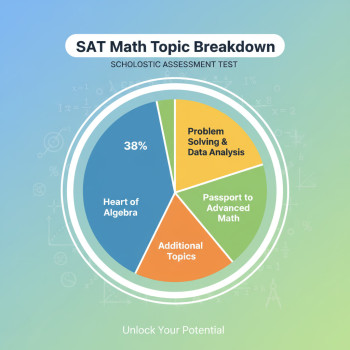Why this guide matters: choosing the right test for your child’s future
The world of college admissions can feel like a maze—especially when your family straddles two educational systems. As a parent in India, you may be wondering whether your teen should focus on India’s national entrance exams (like JEE or NEET), apply to international universities using the Digital SAT, or try to do both. This guide is written for practical, busy families: clear, evidence-based, and kind. It will walk you through the key differences between the Digital SAT and common Indian entrance exams, explain what universities look for, and offer actionable steps and study strategies you can use right away.

At a glance: SAT vs Indian entrance exams (quick comparison)
Before we dive deep, here’s a quick table that highlights the main contrasts between the Digital SAT and two of the most talked-about Indian entrance exams: JEE (for engineering) and NEET (for medicine). This snapshot will help you orient the longer, more detailed sections that follow.
| Aspect | Digital SAT | JEE (Main) | NEET |
|---|---|---|---|
| Purpose | College admissions (mostly undergraduate, global and US-focused) | Undergraduate engineering admissions (India) | Undergraduate medical admissions (India) |
| Format | Digital, adaptive sections (shorter test, built-in tools) | Paper/Computer-based, highly conceptual and competitive | Paper/Computer-based, heavy emphasis on biology + chemistry + physics |
| Skills tested | Reading & Writing, Math (problem solving, evidence-based reading) | Deep physics, chemistry, math problem-solving | Biology-centric with supporting physics + chemistry |
| Preparation focus | Critical thinking, time management, English reading practice | Subject depth, advanced problem practice | Memorization + application in biology; practice problem solving |
| Recognition | Accepted widely by US and many international colleges | Required/primary for most engineering seats in India | Required/primary for medical seats in India |
What this table means for families
If your child is aiming primarily for Indian public universities in engineering or medicine, JEE and NEET are the must-do exams. If they are targeting undergraduate study abroad—especially in the US, Canada, or other international destinations—the Digital SAT becomes a powerful, recognized credential. Many students choose a combined path (preparing for both national entrances and international applications), but that requires careful planning and realistic time management.
Understanding the Digital SAT: what parents should know
The SAT has moved fully digital, making the test shorter, adaptive, and often more student-friendly. Instead of long paper booklets, the Digital SAT uses two adaptive modules—students get different second modules depending on how they do on the first. The math section permits a built-in calculator for all questions, and the reading section emphasizes analysis and evidence rather than long passages to memorize.
Key features and strengths of the Digital SAT
- Digital delivery: more comfortable for students used to screens, with tools like built-in calculators and digital highlighting.
- Adaptive format: the test adapts to a student’s performance, which means sections can feel more personalized.
- Globally recognized: many international universities accept the SAT as part of holistic admissions.
- Shorter test time and clearer question styles: often less endurance-focused than some national tests.
For Indian families, the SAT’s advantage is twofold: it opens doors to global universities and showcases a student’s readiness in reading, writing, and math in a language and format familiar to Western admissions committees.
Understanding JEE and NEET: what parents should know
JEE (Joint Entrance Examination) for engineering and NEET (National Eligibility cum Entrance Test) for medicine are highly competitive, specialized, and subject-focused exams. They are designed to test deep conceptual understanding and advanced problem solving in specific subjects.
How they differ from the SAT in approach and purpose
- Depth over breadth: JEE and NEET probe intense subject knowledge—often beyond typical school syllabi.
- Syllabus-driven questions: a lot of practice is about mastering standard topic sets and tricky question patterns.
- High stakes and intense competition: top ranks require specialized coaching and thousands of focused practice hours.
Unlike the SAT, which emphasizes skills transferable across subjects (critical reading, command of evidence, math reasoning), JEE and NEET are gatekeepers for professional degrees in India.
Which test should your child take? Ten questions to help decide
There’s no one-size-fits-all answer. Here are important practical questions that will help you and your teen decide.
- Where is your child likely to study? India or abroad (US/Canada/UK/etc.)?
- What subject does your child want to study—engineering, medicine, liberal arts, or something else?
- How much time can they realistically dedicate to focused test prep each week?
- Does your child prefer depth (subject mastery) or breadth (reading, reasoning, flexible math)?
- Does your family want to keep options open—apply both in India and abroad?
- How comfortable is your child taking long, high-pressure single-day exams?
- What is your budget for coaching, mock tests, and application support?
- Are English skills strong enough for an exam like the SAT that assesses reading and writing?
- Does your child need scholarship opportunities linked to test performance?
- Would staged preparation (start with SAT basics, then shift to JEE/NEET depth) fit your timeline?
These questions are intentionally practical. In many cases, families choose a hybrid path—sustained subject coaching for national exams and parallel SAT practice for international applications. It’s a lot, but thoughtful planning can make it manageable.
How to build a realistic timeline (sample plan)
Here’s a sample 12-month timeline for a student in Class 11 or early Class 12 who wants to keep options open for both Indian and international admissions.
| Months | Focus | Goal |
|---|---|---|
| Months 1–3 | Diagnostic tests (SAT + subject test style), establish baseline | Create a balanced weekly schedule; identify strengths/weaknesses |
| Months 4–6 | Core content build (JEE/NEET subjects) + weekly SAT practice (reading & math) | Start mock JEE/NEET series; complete basic SAT official practice tests |
| Months 7–9 | Intensive problem solving for JEE/NEET; timed SAT section practice | Targeted improvement on weak areas; take a full Digital SAT mock |
| Months 10–12 | Final revisions, mock tests, application components (essays, recommendations) | Be application-ready; attempt SAT if applying overseas; final JEE/NEET prep |
Tip: Quality over quantity
Thousands of hours alone won’t guarantee success. Structured practice, frequent mock tests, and timely feedback are far more effective. That’s where personalized tutoring—like Sparkl’s 1-on-1 guidance and tailored study plans—can be a real differentiator: focused feedback, adaptive pacing, and AI-driven insights into progress help students use every hour wisely.
Preparation strategies that actually move the needle
Preparation differs by test, but some study habits are universally powerful. Here are strategies that high-performing students use.
For the Digital SAT
- Daily reading habit: quality nonfiction and evidence-based reading. Discuss passages out loud; ask your teen to summarize main ideas, tone, and author intent.
- Targeted math practice: focus on conceptual understanding and data interpretation rather than rote tricks.
- Timed section practice: simulate the adaptive format with two shorter modules to train focus and pacing.
- Review mistakes deeply: each wrong problem should become a mini-lesson—why the answer was wrong and what thinking error occurred.
For JEE/NEET
- Foundation first: ensure textbook concepts (NCERT and equivalent) are rock-solid—many advanced problems are only variations on core ideas.
- Problem sets and mock tests: quality over quantity—solve varied difficulty problems and analyze patterns.
- Regular review cycles: space repetition helps retain formulas, reaction mechanisms, and problem methods.
- Time management practice: some JEE sections reward clever shortcuts; timed practice helps find the right balance.
Balancing mental health and study intensity
It’s easy to forget that test preparation is a marathon, not a sprint. Build sustainable routines: short focused study blocks, daily movement, healthy sleep, and time for hobbies. Encourage regular check-ins—ask how the workload feels and adjust. If stress spikes, pause and consider structured support: tutors, counselors, or mentoring that includes emotional resilience techniques.
How admissions committees view the tests
Understanding how colleges interpret these scores can help with strategy. Indian institutes rely heavily on JEE/NEET ranks for seat allocation. International universities typically use the SAT as one of many components—scores, essays, recommendations, extracurriculars, and demonstrated interest all matter.
When the SAT shines
- When students show strong critical reading and evidence-based thinking.
- When your teen’s profile benefits from standardized scores to complement a strong GPA and extracurricular leadership.
- When scholarship decisions weigh SAT results.
When national exams are decisive
- When seat allocation in India depends on competitive ranks (JEE/NEET).
- When specialized subject expertise is essential for admission (engineering/medicine).
Cost, logistics, and accessibility: practical family considerations
Costs and logistics differ. National exams are administered in India with well-established coaching ecosystems. The Digital SAT requires online registration, international test centers or authorized proctors, and sometimes travel—factor in registration fees, potential travel costs, and timelines. Also consider prep costs: while classroom coaching can be expensive, targeted personalized tutoring (for example, Sparkl’s flexible 1-on-1 tutoring and AI-driven progress reports) may provide a cost-effective, high-impact alternative.
Real-world examples: three family profiles and the best test strategy
Here are short, realistic profiles to help you map choices to goals.
Profile 1: Riya — aspiring medical student (India-focused)
Goal: Secure a top MBBS seat in India. Strategy: Full NEET-focused preparation with NCERT mastery, frequent mock NEETs, and targeted biology revision. SAT not prioritized unless planning to apply abroad as backup.
Profile 2: Arjun — engineering with global interest
Goal: Apply to top US/Canadian engineering programs while keeping Indian options open. Strategy: Dual path—dedicated JEE coaching schedule in mornings + SAT practice plan in evenings/weekends. Prioritize time management, and consider personalized tutoring to avoid overtraining and prevent burnout.
Profile 3: Meera — liberal arts and a flexible path
Goal: Pursue humanities/social sciences abroad; keep local choices open. Strategy: Strong SAT prep, portfolio building, essays, plus steady school grades. Minimal JEE/NEET focus unless family wants Indian professional backup.
How personalized tutoring helps—and what to look for
Effective tutoring does three things: it diagnoses precisely, creates a tailored plan, and gives fast, specific feedback. Look for tutors who can adapt to your teen’s learning style, report progress transparently, and help with both content and test strategy. Services that combine human tutors with data-driven insights (for example, Sparkl’s AI-driven progress tracking coupled with expert tutors) can accelerate growth while keeping study time efficient.
Application season essentials beyond test scores
Tests are important, but admissions are holistic. Help your child craft a compelling narrative—meaningful extracurriculars, leadership experiences, compelling essays, and strong teacher recommendations. For international applications, begin essays early; for Indian exams, focus on rank-improving strategies. Make sure transcripts, identity documents, and any scholarship applications are prepared well before deadlines.
Practical next steps for parents
- Have an honest conversation with your teen about goals—India, abroad, or both.
- Arrange a diagnostic assessment for SAT and subject exams to measure baseline.
- Create a realistic 6–12 month plan (include mock tests and application milestones).
- Consider blended support: subject coaching for JEE/NEET and targeted SAT tutoring for admissions essays and test strategy.
- Monitor wellbeing—build pauses, encourage sleep, and maintain perspective: results matter, but wellbeing matters more.
Final thoughts: choosing a path that fits your child
There’s no singular “best” exam—only the best fit for your child’s goals, strengths, and resilience. The Digital SAT opens international doors and highlights reasoning and communication skills; JEE and NEET gatekeep specialised professional education in India. Many successful students navigate both terrains by choosing smart, sustainable strategies and seeking tailored help where it matters most. If you’d like a structured starting point, consider a diagnostic test and a short personalized plan—Sparkl’s 1-on-1 tutors and tailored study plans (with AI-driven insights) are built for families needing focused guidance without wasting effort.
Resources to bookmark (for your planning checklist)
Make a simple folder (digital or physical) with these items to keep the process organized:
- Diagnostic test reports and study schedule
- Mock test calendar and score tracker
- Application timelines and document checklist
- List of recommended tutors/mentors and weekly meeting schedules
One last piece of advice
When pressure mounts, remember this: a child’s identity is far broader than a test score. Support, steady guidance, and realistic planning will not only help them earn the scores they need but also build resilience for the next stages of life. You’re not alone in this—families, educators, and thoughtful tutoring partners can make the path clearer and kinder.

If you want, I can help you build a personalized 12-week plan for your child based on a quick diagnostic—let me know their current grade, target universities, and available study hours per week, and we’ll sketch a practical roadmap together.
















No Comments
Leave a comment Cancel